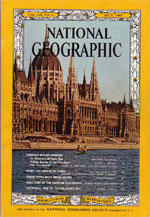Fifty Years Ago: US Opinions about Romania (1964-1965)
1964 was a turning point in US-Romanian relations. This was the last year of Gheorghe Gheorghiu-Dej's reign as Communist Party leader before his death in 1965. A feeling of liberalization was felt as overt Russian influence was rejected by the regime, political prisoners were released, and major infrastructure projects focused on housing and industrial growth were launched. Both presidents John F. Kennedy and Lyndon B. Johnson encouraged closer ties with Romania and opened the door to greater trade. Nicolae Ceaucescu would inherit the momentum of these initiatives when he took control of the reigns of the Party in 1965. But starting a decade-or-so later, he would turn the tide backwards into a grim police-state and national economic bankruptcy.
New York Times journalist Max Frankel wrote optimistically at the time: "Finally, 1964 was the year in which all the east European governments, to one degree or another, turned away from Soviet economic tutelage and toward adoption of capitalist techniques. These experiments will lead to serious departures from Communist ideology as well as to practical accommodations with the West."
Source: The Harford Times January 20, 1965, reprint "East Europeans Distrust Marxism, Seek Better Life" from the NYT
Several U.S. national press articles reflected changing attitudes towards Communist Romania.
Saturday Evening Post "The new Communism" by Tad Szulc / November 24, 1964
Record American (Boston) "Romania Woos Investors" by Bob Considine / November 23, 1964
Parade Magazine "will the soviet empire crumble" by Jess Gorkin / December 27, 1964
New York Times "2 U.S. Companies Will Aid Rumania" by Stewart Alsop / January 5, 1965.
This political East-West thaw led to unusual travel permission behind the Iron Curtain. The Communist riparian states of the Danube River ganted visas to nine students from Dartmouth College to canoe the 1800-mile length of Danube in 1964. The expedition, originated by Dan Dimancesu, became a cover story in the National Geographic Magazine published a year later in July 1965.
SOURCE: Articles from D. Dimancescu files
1964 was a turning point in US-Romanian relations. This was the last year of Gheorghe Gheorghiu-Dej's reign as Communist Party leader before his death in 1965. A feeling of liberalization was felt as overt Russian influence was rejected by the regime, political prisoners were released, and major infrastructure projects focused on housing and industrial growth were launched. Both presidents John F. Kennedy and Lyndon B. Johnson encouraged closer ties with Romania and opened the door to greater trade. Nicolae Ceaucescu would inherit the momentum of these initiatives when he took control of the reigns of the Party in 1965. But starting a decade-or-so later, he would turn the tide backwards into a grim police-state and national economic bankruptcy.
New York Times journalist Max Frankel wrote optimistically at the time: "Finally, 1964 was the year in which all the east European governments, to one degree or another, turned away from Soviet economic tutelage and toward adoption of capitalist techniques. These experiments will lead to serious departures from Communist ideology as well as to practical accommodations with the West."
Source: The Harford Times January 20, 1965, reprint "East Europeans Distrust Marxism, Seek Better Life" from the NYT
Several U.S. national press articles reflected changing attitudes towards Communist Romania.
Saturday Evening Post "The new Communism" by Tad Szulc / November 24, 1964
Record American (Boston) "Romania Woos Investors" by Bob Considine / November 23, 1964
Parade Magazine "will the soviet empire crumble" by Jess Gorkin / December 27, 1964
New York Times "2 U.S. Companies Will Aid Rumania" by Stewart Alsop / January 5, 1965.
This political East-West thaw led to unusual travel permission behind the Iron Curtain. The Communist riparian states of the Danube River ganted visas to nine students from Dartmouth College to canoe the 1800-mile length of Danube in 1964. The expedition, originated by Dan Dimancesu, became a cover story in the National Geographic Magazine published a year later in July 1965.
SOURCE: Articles from D. Dimancescu files

Source: The Harford Times , January 20, 1965
